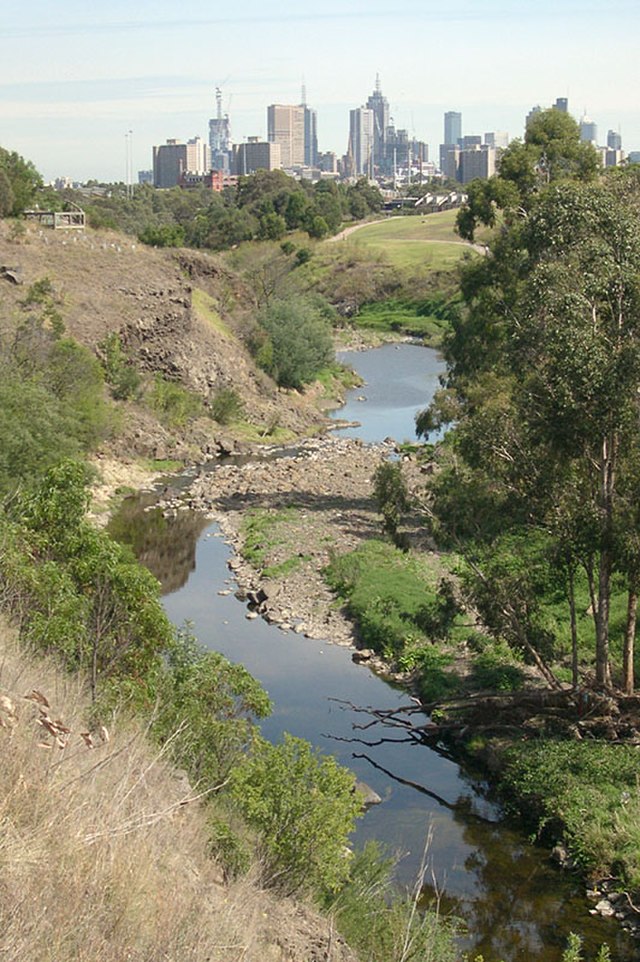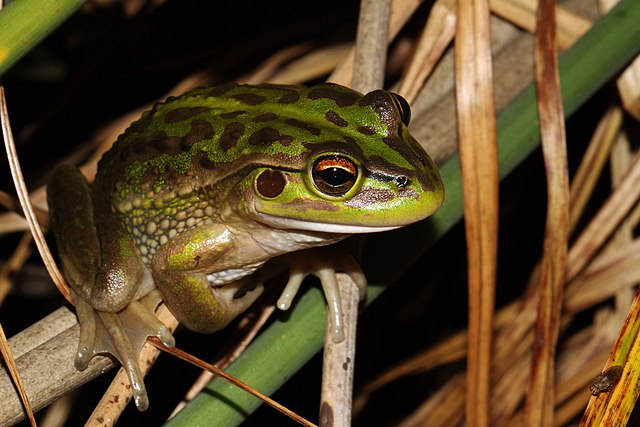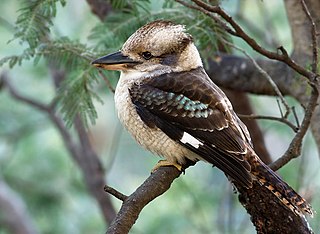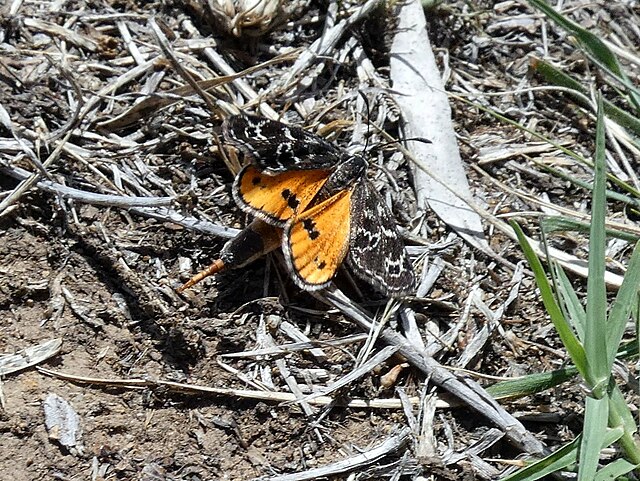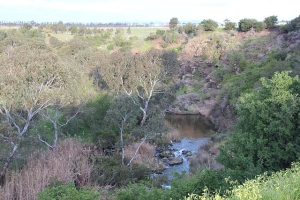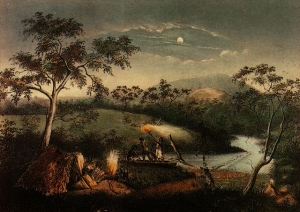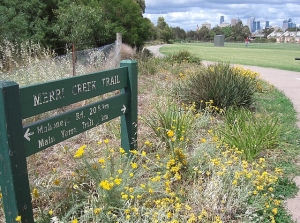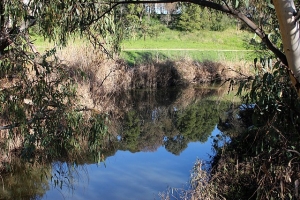Photo: Picture of the Merri Creek in North Coburg, Victoria, Australia, between the Coburg Lake and Sports Centre. Photographer: Paul Fenwick, Wikimedia Commons
What Does the Merri Creek Have to Do With MEL? Everything!
Written by Anna Strempel
My friend and former colleague, Judy Bush, wrote an excellent article for The Conversation last year. It’s called ‘Making merry: How we brought Melbourne’s Merri Creek back from pollution, neglect, and weeds’, and it’s about – well, what it says in the title! As a life member of the Friends of Merri Creek group and a senior lecturer in Urban Planning, Judy is well placed to tell the story of the Merri’s restoration; her article is a beautiful read and I highly recommend it, especially if you have a connection to the Merri Creek.
But what does all this have to do with Measurement, Evaluation and Learning (MEL)?
Shortly after reading Judy’s article, I was scheduled to facilitate a workshop for the Australian Environmental Grantmakers’ Network (AEGN), which works to increase the amount and impact of philanthropic funding for the environment. This would be their first annual reflection session under the MEL framework we’d built together a year before, and I was looking forward to it. The AEGN is an inspiring organisation and reflection workshops are one of my favourite MEL activities: you get to review all the data collected throughout the year, figure out what it’s telling you, and then decide how those insights should inform your next phase of work. At Clear Horizon we often build annual reflection workshops into MEL frameworks as a cornerstone of the Learning cycle, and we love being invited back to facilitate them.
As I was preparing for the AEGN workshop, Judy’s article kept filtering back into my thoughts. I suddenly realised it was a great analogy for MEL and the importance of the ‘L’ in particular.
In her article, Judy starts by recounting how she walked along Merri Creek with a friend, “past trees, native grasses, a small wetland echoing with frogs”; as they walked, she told her friend the story of how the Merri was transformed from a “weed-infested, polluted and threatened” dumping ground to the relatively healthy urban waterway it is today.
Photo: The Merri Creek passing through Fairfield and Clifton Hill with the Melbourne city skyline in the distance, Victoria, Australia. Photographer: Robert Kerton, Wikimedia Commons
Photo: Growling grass frog (Litoria raniformis),
Matt Clancy Wildlife Photography, Wikimedia Commons
The coalition that led the Merri’s restoration was formed in the 1970s. It was spurred by proposals for a major road development, which Judy says would have “completely obliterated” the creek. Faced with this threat, community groups and citizens joined with local councils to form the Merri Creek Coordinating Committee (now Management Committee), which eventually grew to include state government agencies and water management authorities. The Committee built up enough resources to employ a revegetation team, and things took off from there.
While there is always more to be done, the results so far are striking: as Judy explains, “[f]rogs, birds, snakes, eels and insects are returning to the creek and the newly created wetlands”, and there’s even the occasional swamp wallaby sighting. The Merri Creek has come a long way from the “industrial sewer” of the ‘70s, and for that, we have the members and volunteers of the Merri Creek Management Committee to thank.
Photo: JJ Harrison. Wikimedia Commons
For me, this story highlights so many aspects of MEL. Here are some:
Golden Sun Moth (Synemon plana).
Photo: Kai Squires, Wikimedia Commons
Measurement
Measuring biophysical indicators like water quality, pollution levels, habitat, invasive species, and so on helps us understand how healthy a creek ecosystem is at any given point and how this has changed over time. We can also track qualitative measures—for example, by conducting regular surveys to find out how creek users feel about it, how they use it, and what they value.
Importantly, if we only measured Merri Creek’s health today, we wouldn’t understand how far it has come since the ‘70s—we might instead compare it to a best-case scenario and conclude that restoration works had failed. That’s why consistent, ongoing measurement is so important.
Evaluation
If measurement data tells us that a creek’s restoration has been largely successful, deeper exploration helps us to understand why. For example, Judy’s research found that the partnership between Friends groups and the Merri Creek Management Committee has been vital, with stakeholders taking on different and complementary roles as needed. This finding is supported by evaluations Clear Horizon has conducted for other urban waterway initiatives, and it provides insights into what makes a successful collaboration.
Wikimedia Creative Commons: Takver.
Original artwork by Charles Troedel, 1864
Judy’s powerful article also shows how valuable storytelling is – not just for communicating about impact, but also in helping to unpack how change happens. In this case, Judy was not just a documenter – she was also an active participant in restoring the Merri Creek. Having been involved from the outset, she knows that the road development plans were the catalyst for action – without this threat, the creek’s story might have been very different. This is remarkably similar to other examples we’ve heard at Clear Horizon when evaluating collaborations. What does this tell us about the conditions under which transformative change can happen?
Learning
Learning cycles are the opportunity to bring measurement and evaluation together and make sense of it, to inform what happens next and to tell the story of change in meaningful ways. Once we know that neglected waterways can be transformed and that some of the approaches might help make it happen, what will we do with that information? How can we apply what we’ve learnt to our decision-making about this and other initiatives?
Learning cycles also help us contextualise findings. For example, in this case, the measurement data tells us that the Merri Creek is much healthier than it was before restoration began, and we know from evaluation—or research—that collaboration between stakeholders with different roles and power dynamics was crucial to achieving this. But that is not the full story.
Wikimedia Commons. Photo: pfctdayelise
Wikimedia Creative Commons: Takver.
Merri Creek at Moomba Park in Fawkner
The Merri Creek runs through Wurundjeri Country, and when we widen the lens, we acknowledge that before colonisation, it was part of a thriving, biodiverse ecosystem incorporating woodlands, grasslands, billabongs, and wetlands. As Judy explains, colonisation saw displacement, dispossession and disruption to Wurundjeri methods”, and increasing urbanisation filled the creek with waste from factories and litter from the streets. In that context, the creek’s current state is an important improvement from the 1970s, but it is still such a long way from where it once was. In a country that still struggles to grasp the deep importance of First Nations knowledge and practices, what lessons might we take from this, and how might we apply them?
When I met with the AEGN team for their annual reflection workshop, I spoke about Judy’s article as part of the introduction. The story of Merri Creek felt particularly relevant to a group so focused on transformative environmental change, and I hoped it would illustrate that MEL is about so much more than just counting outputs and writing reports. I’ve been meaning to write this up ever since the workshop, and I’d love to know if it resonates with you!
I recommend checking out Judy’s original article here. When you’re done, have a poke around The Conversation website – it’s full of high-quality, evidence-based articles written by academics and journalists in collaboration. And if you want to learn more about MEL, check out our wide range of courses and free resources that can be of help to similar community-led projects like Friends of Merri Creek.
This video by Friends of Merri Creek documents the history, the ongoing work, the characters and the projects, the setbacks and the victories of this active community group devoted to the care and protection of Merri Creek. You can also learn more about Friends of the Merri Creek on their website.


